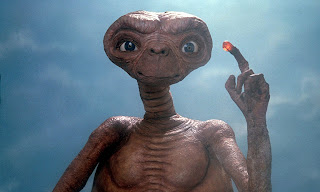 |
| Fig 1: Poster |
 |
| Fig 2: The devastating end scene |
 |
| Fig 3: Strange and unsettling costumes |
The release of the film was very troublesome, as the director was told to cut lots off of the footage, and the original cut was considered to be lost, however later on it has been found (quite damaged) and after restoring what still could be saved, the film we see today (said by the director) is the closes to the original. Sometimes it is noticeable where the film was damaged and repaired by the quality and cuts, but the events on the screen take the audience's attention away from the little flaws in the footage.
The movie displays two main religion that could be considered as very opposing religions. The main protagonist is a faithful Christian, while all of the locals are pagans. Said by Steven D. Greydanus "Is The Wicker Man anti-Christian? Anti-pagan? Anti-religion? Where are its sympathies? Does it have any?...The two worldviews stand face to face, both unmasked, and in the end nothing is resolved." (Greydanus, s.d.) Throughout the film the audience is presented with a quite detailed exploration of pagan beliefs, while showing strong contrast as Howie keeps true to his Christian beliefs and often preaches about it. At the last scene the differences finally meet and that is the part that makes the whole film questionable if it is against Christianity, claiming that there is no God or God has failed and is dead, while Howie pray and keeps strong; or it tries to show Paganism in a negative light, as they do lots of strange and creepy things throughout the whole film and they happily dance and sing while the sacrifice screams and burns to death. But in the end it is left to the audience which part they are taking and what they read into it.
The film had a troublesome past, and was not very recognised until after it has been repaired from the damages. The general opinion about the film is highly positive and is often said to be one of the greatest British horror film, with high ratings from various websites or magazines; finding negative opinion of the movie is quite a challenge. However, those who did not find enjoyment in the film, often criticise the plot, message, pace and the incorrect categorising of 'horror and mystery'. As said by a review on IMDb "If this film deserves any credit at all, it's for an underlying metaphor that puts the viewer in the very same emotional state as the main character." Agreeing with this statement, the movie does quite actively achieves to put the audience in the shoe of the main character, building up frustration and confusion, as the hints and clues of the missing girl points to another direction, but it has an incredibly slow pace and questionable, unnecessary or disturbing scenes and elements. Another review states "This is definitely one of the worst movies I have ever seen. At the ending, I was very confused as to what I should take away from it. That Christians are pure and above reproach and pagans are evil? Is there even an underlying theme to this movie? If so, it was completely lost on me having to sit through all its incredibly dull scenes." Overall, most people have greatly enjoyed the film, and there is no doubt, that in some ways it can be viewed as creative horror film with a message that can be controversial, but it is just simply not for everyone.
Bibliography:
- Billson, A. (2010) The Wicker Man: No 4 best horror film of all time. At: https://www.theguardian.com/film/2010/oct/22/wicker-man-hardy-horror (Accessed on 13.04.17)
- Greydanus, S. D. (s.d.) The Wicker Man (1973). At: http://decentfilms.com/reviews/wickerman1973 (Accessed on 13.04.17)
- IMDb Reviews & Ratings, 'equazcion' (2007) The Wicker Man. At: http://www.imdb.com/title/tt0070917/reviews?ref_=tt_urv (Accessed on 13.04.17)
- IMDb Reviews & Ratings, 'herbivore15' (2006) The Wicker Man. At: http://www.imdb.com/title/tt0070917/reviews?ref_=tt_urv (Accessed on 13.04.17
- Leigh, D. (2010) Why Sing-along-a-Wicker-Man hits all the wrong notes. At: https://www.theguardian.com/film/filmblog/2010/jun/11/sing-along-a-wicker-man (Accessed on 13.04.17)
- Scovell, A. (2013) The Wicker Man (1973) – Defining Of The Folk Horror. At: https://celluloidwickerman.com/2013/09/16/the-wicker-man-1973-defining-of-the-folk-horror/ (Accessed on 13.04.17)
Illustration List:
- Figure 1: Poster (s.d.) [Poster] At: http://www.darkcitygallery.com/The_Wicker_Man_Movie_Poster_p/dm011.htm (Accessed on 13.04.17)
- Figure 2: The devastating end scene (2015) [Film Still] At: http://www.thefilmagazine.com/in-memory-of-christopher-lee-an-analysis-of-the-wicker-man-1973/ (Accessed on 13.04.17)
- Figure 3: Strange and unsettling costumes (s.d.) [Film Still] At: http://68.media.tumblr.com/62673b17098e30c589027a437545afdd/tumblr_nxo26jhF1X1rtj3g0o2_1280.jpg (Accessed on 13.04.17)
- Figure 4: Howie placing a Christian cross in the unused church (s.d.) [Film Still] At: http://www.homecinemachoice.com/sites/18/images/article_images_month/2014-01/wicker%20man%2002.jpg (Accessed on 13.04.17)




















